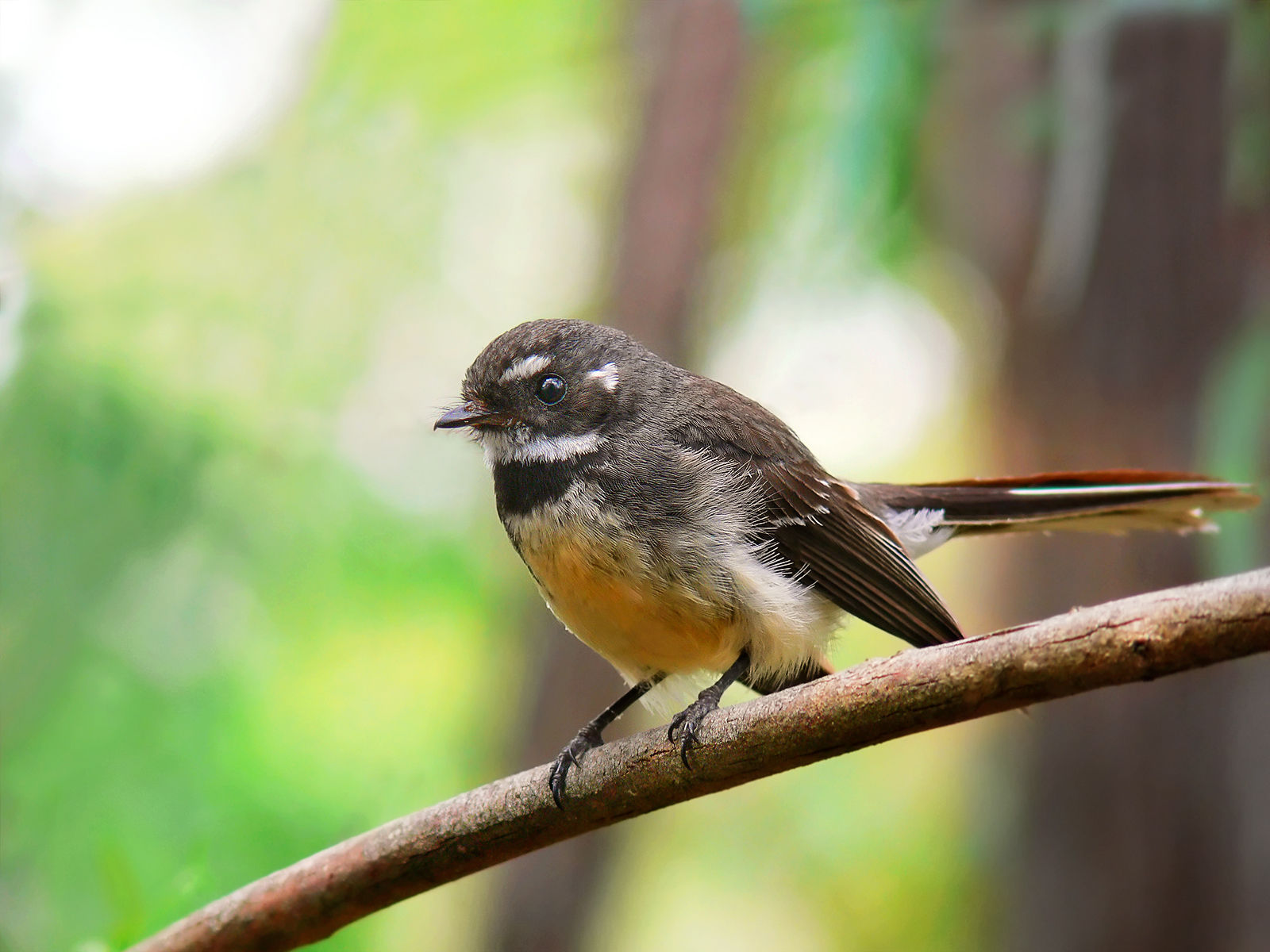- Grey Fantail
Taxobox
name = Grey Fantail
status = LC | status_system = IUCN3.1

image_width = 250px
regnum =Animal ia
phylum = Chordata
classis = Aves
ordo =Passeriformes
familia =Rhipiduridae
genus = "Rhipidura"
species = "R. fuliginosa"
binomial = "Rhipidura fuliginosa"
binomial_authority = Sparrman, 1787The Grey Fantail ("Rhipidura fuliginosa") is a small insectivorous bird. It is a very commonfantail in all parts ofAustralia except western desert areas, and is also found inNew Zealand (where it is also known by its Maori name, "Pīwakawaka" or "Tīwakawaka"),New Guinea , theSolomon Islands ,Vanuatu andNew Caledonia .The Grey Fantail is plain in colour: mid to dark grey or grey-brown above, lighter (often yellowish) below, with a white throat, white markings over the eye, and (depending on the race) either white-edged or entirely white outer tail feathers. It grows to some 16 centimentres in length, of which half is the tail, which, as the name implies, is often fanned out during display. This reveals that it is only the outer tail feathers that are light; the innermost are dark. Some subspecies are found in a darker plumage, notably in southern New Zealand.
During waking hours the bird is almost never still. It flits from perch to perch, sometimes on the ground but mostly on the twigs of a tree or any other convenient object, looking out for flying insects. The birds are not shy, and will often flit within a few metres of people, especially in forested areas and suburban gardens. In doing so, it is able to catch any small flying insects that may have been disturbed by human activities such as walking or digging.
The bird's call is an almost metallic "cheek", either as a single sound or (more often) repeated as a chattering. The birds form compact, cup-shaped nests, usually in the forks of trees, made from moss, bark and fibre, and often completed with spider's web. They raise several broods per season, usually each of 3-4 cream eggs spotted grey and brown. Incubation period is around two weeks, and incubation and feeding duties are shared by both adults.
Gallery
References
* Database entry includes justification for why this species is of least concern
*Falla, R.A., Sibson, R.B., & Turbott, E.G., (1970). "A field guide to the birds of New Zealand." London: Collins.External links
* [http://ibc.hbw.com/ibc/phtml/especie.phtml?idEspecie=6744 Grey Fantail videos] on the Internet Bird Collection
Wikimedia Foundation. 2010.
